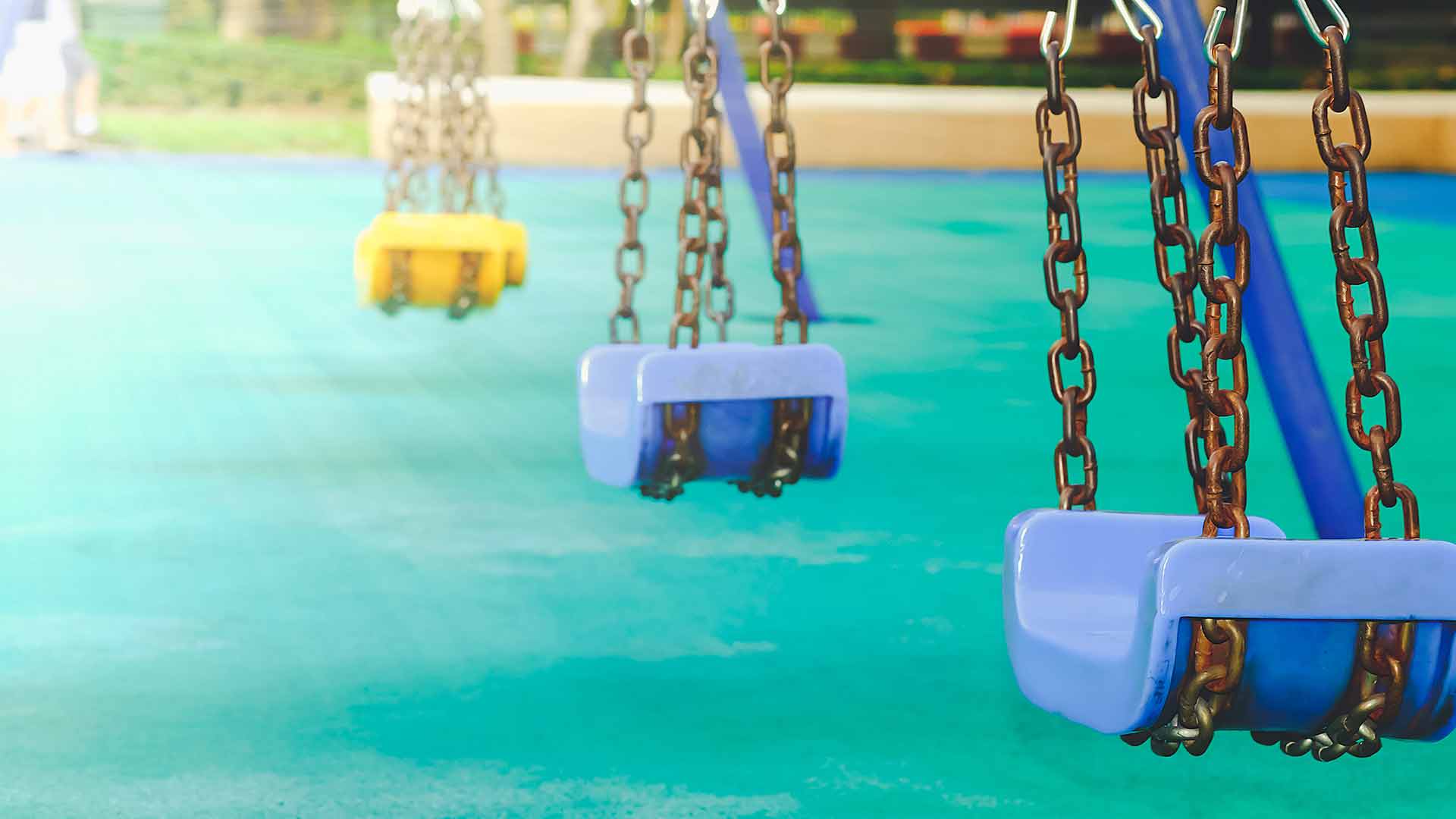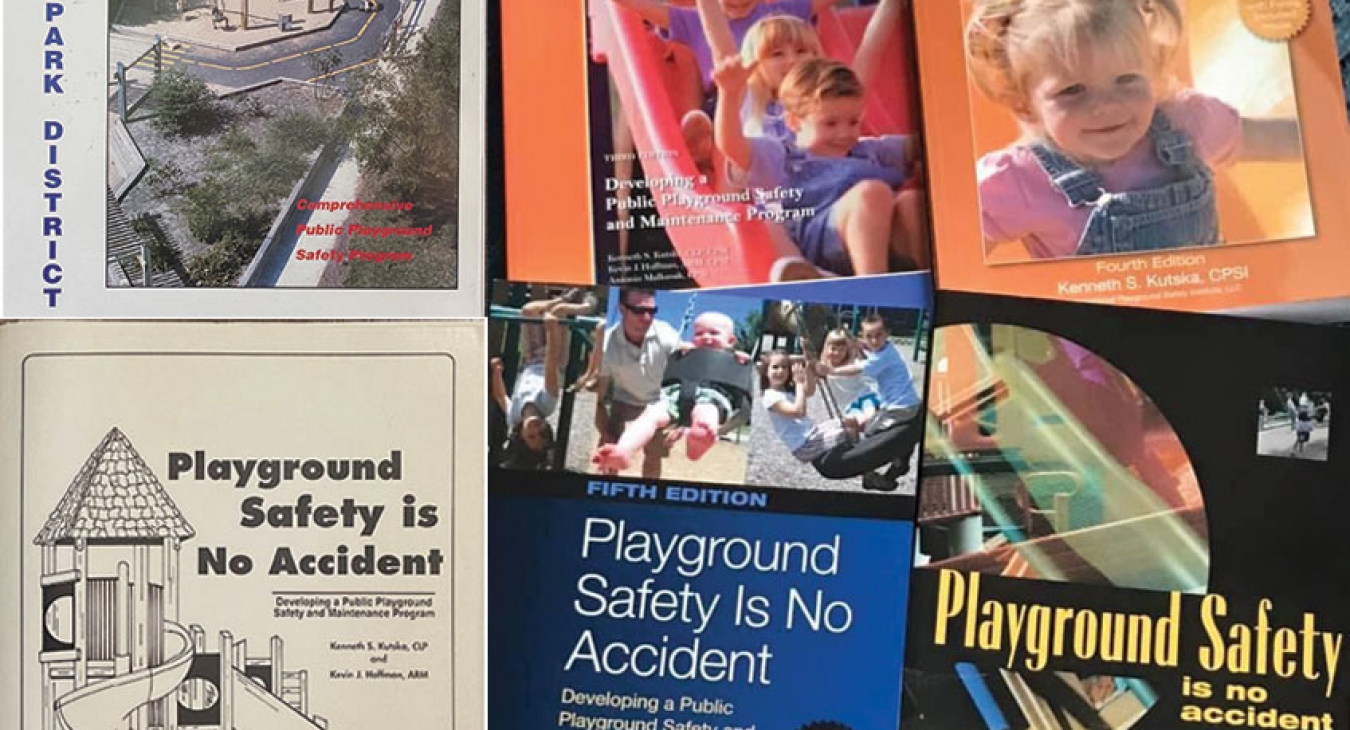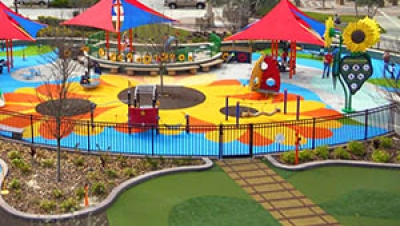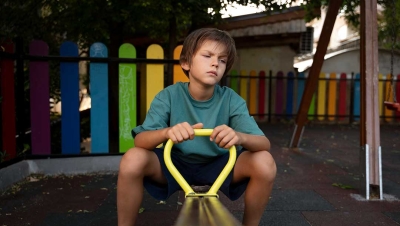IPSI, LLC Introduces New Playground Safety Is No Accident 6th Edition
On behalf of the tens of thousands of playground owners/operators who have and will continue to use the contents of Playground Safety Is No Accident (PSINA) as a guide for training staff to inspect and maintain safer playgrounds, we are pleased to announce the new 6th Edition. It is almost a decade since this resource was last revised and much has transpired since the printing of the 5th Edition back in 2011.
Since 2011 there have been two new releases of the ASTM F1487 Standard and many revisions to the various impact attenuating surfacing standards under the jurisdiction of the F08.63 Subcommittee. Likewise, other international playground standards from around the world have also been revised. The manufacture of playground equipment and various impact attenuating surfacing systems have become more of an international marketplace. Many play equipment manufacturers have expanded their supply chains to other parts of the world as new manufacturing techniques and new materials have become more readily available. This expansion has brought about more creative designs that focus more on play value and risk-taking rather than on safety being the first and foremost objective. Many international companies have entered into the public playground equipment manufacturing world in hopes to secure a segment of the growing North American and world markets for both play equipment and protective surfacing. There are still several differences in the Asian versus European versus North American Playground Safety Standards. Standards writing organizations in North America such as ASTM and CSA have focused on many of these market-driven changes. We have also recognized the need to apply a more hazard-based risk assessment approach to our performance standards development brought about by the inability of standards writing organizations to keep pace with all the new industry developments. We have found that we can no longer rely on the prescriptive performance standards writing approach for each and every iteration for every conceivable variation of our traditional playground equipment types. We have learned a great deal about our differences within each other’s national and international standards. While international standards are not likely to be harmonized any time soon, we can all agree that we should at least be speaking the same language related to our playground safety scoping statements and common performance requirements.
My involvement in the international community’s discussion on harmonization has provided useful and insightful information for improving and advancing our inspection and maintenance practices. This information will assist playground safety inspectors to make playspaces safer by effectively and efficiently addressing identified deficiencies in the playground environment. We will never eliminate all injuries and deaths on playgrounds, but we can surely focus on eliminating and/or mitigating those things that contribute to the frequency and severity of all serious playground-related injuries.
In response to the global playground safety movement, the 6th Edition includes an expanded glossary of terms to clarify and harmonize the language used by playground safety standards writing organizations. I refer to this international language as, “Playgroundese.”
This new edition includes upgraded inspection forms and worksheets with expanded explanations on how to use each form. An important change is the completely revised “Post Installation Compliance Inspection and Assessment” process and form. This form was formally referred to as the “Playground Safety Compliance Audit.” While the scope or purpose of the various types of playground safety inspection forms remains somewhat the same, there have been many revisions based on the redefining of some of the more basic equipment types as we move away from the prescriptive approach to a more hazard/risk assessment approach of performance standards writing. The content has been modified to reflect what has been occurring around the world with regards to industry performance standards and this includes our most recent efforts to harmonize terminology and their associated definitions related to playground design, manufacture, assembly, installation, inspection, maintenance, and the overall management of these public facilities for the benefit of all people.
Today’s playground safety needs have become more complex and inspectors require more information and tools to perform a more effective and efficient job. Over the years, many Certified Playground Safety Inspectors (CPSI’s) have taken time to write and express their needs for additional resources. This new version includes many of these suggestions. There are a few personal testimonials from people who have taken the time to put into their own words how previous editions of this book have provided the information and knowledge necessary to develop, implement, and improve a playground safety inspection and maintenance program.
As previously stated, one of the largest undertakings in this revision was the total rewrite of the “Playground Safety Compliance Audit Form.” The revised form reflects the most current recommendations found within ASTM F1487-20. This new audit form is now referred to as the “Playground Safety Compliance Inspection and Assessment Form.” Its primary purpose continues to identify what is and is not in compliance with the best practices (Standards and Guidelines), Changes in the form and process will aid the user to focus more on the importance of each identified shortcoming to determine a priority for corrective action. This prioritizing or ranking in order of importance what actions are required and when they should occur are still based on the probability of a serious injury occurring because of frequent exposure to the non-compliant condition during normal use. There are many different risk assessment tools out there that an inspector can use during this process. This 6th Edition provides some additional materials to help the inspector establish their own assessment tool or process.
Most everyone agrees ASTM Standards are voluntary unless codified by some regulatory authority with jurisdiction over the owner/operator. However, these standards, along with the recommendations found in the current 2010 United States Consumer Product Safety Commission’s Handbook for Public Playground Safety provides everyone responsible for the safety of playground users a reasonably safe harbor for their defense should a serious injury occur. The new audit form, as with all other audit forms before, includes the new citation numbers relative to either the CPSC or ASTM document. These citations provide a reference to assist the user in preparing formal reports. They also provide a quick reference guide for less experienced inspectors who may need to refresh their interpretation of specific issues that may arise during the inspection process.
In September of 2010, the United States Department of Justice 2010 ADA Standard for Accessible Design (DOJ 2010 Standard) became law. While no one can be guarantee absolute compliance to this law, the 6th Edition includes a new section to assess compliance to the barrier-free accessibility minimum requirements up to, into, and through the playground. This form is also provided as part of the comprehensive post-installation “Playground Safety Compliance Inspection and Assessment.” This form and the process can be conducted outside of the post-installation compliance inspection process as a stand-alone accessibility assessment process for those who have yet to complete a transition play for assessing every playground for compliance with the accessibility and barrier-free requirements based on the enforceable minimum requirements of the DOJ 2010 Standard for Accessible Design. This assessment process does not attempt to qualify or guarantee a playground is ADA compliant because only the Department of Justice is the only authority for that final determination. There are many new additions under types of playground equipment that follow the new ASTM Standard.
The PSINA Book also includes a “Playground Safety Compliance Inspection and Assessment Short Form.” In 2002 with the 3rd Edition of PSINA there was a need for a revised “Audit Form.” Between 1995 and 2002 there were many changes to the ASTM F1487 Standard. Inspectors were looking for a current checklist that was up to date with changes in both ASTM and CPSC Handbook. While there was not much of a need to revise the remainder of the book the Audit Form was in definite need of revision. Antonio Malkusak now of Abundant Playscapes previously worked as a landscape architect for the Wheaton Park District. Wheaton was a member of the Park District Risk Management Agency (PDRMA) who also requested an updated form for their member agencies. I was too busy at the time to undertake this project, so Tony volunteered to take this on which ultimately lead to the 2002 3rd Edition. Part of Tony’s work for PDRMA was to create what was referred to as an “Audit Short Form” which was a compilation of all the changes that had occurred within the ASTM Standards and CPSC Handbook since the last printing of the book. This provided an option for playground operators who had previously conducted a comprehensive post-installation compliance inspection just before 1997. Using this new “Short Form” they could review all their playgrounds and focus on just the changes in performance requirements assuming that current inspections, maintenance, and repairs kept the playground in substantial compliance with those standards and guidelines in effect at the time the original compliance inspection was completed. There is another new short form to assist those who may not have done another comprehensive compliance inspection and assessment since the 4th Edition of PSINA in 2009 which addressed the most recent changes to ASTM F1487-07. This new short form will address changes in the 2010 CPSC Handbook for 2-12 playgrounds and the ASTM F1487 Standard versions from 2011, 2017, and 2020. There have been many changes to the content and layout of the new post-installation compliance audit process so it might behoove all operators to complete the entire process from the very beginning but I will leave that up to you to decide. I have placed more emphasis on the assessment process for all identified non-compliant conditions including all the minimum accessibility and barrier-free requirements. There now are more ASTM F1487 requirements for additional information that the owner needs to gather to verify in writing the playground equipment and the impact attenuating surfacing system was installed according to the manufacturer’s installation instructions. While gathering this information is not necessarily the responsibility of the inspector this information should still be available for review by the inspector. This written verification should any special requirements as provided by the manufacturer for installation, inspection, maintenance, repairs, and performance are being followed and are part of the playground site history file. In addition, if inspectors are not required to perform surfacing compliance drop testing during their inspection, they should include a disclaimer to that effect in their contract or final report. Without written verification of surfacing performance compliance, the job as a playground safety compliance inspector is incomplete. Surfacing performance is directly related to a playground’s overall safety compliance ranking and surfacing compliance verification to minimum requirements is directly related to the mechanism of injury outcome for both frequency and severity.
PSINA 6th Edition includes all the inspection forms for each type along with other worksheets in an electronic format. The entire book and interactive adobe formatted forms can also be purchased separately in an electronic format. The electronic format will again include a PDF of the DOJ 2010) Standard, revised “Maintenance Needs Assessment Checklist” covering those inspection items that need to be assessed as part of any more comprehensive preventive inspection and maintenance process. This process would typically include the Low-Frequency Inspection which is now being referred to as the “Operational Inspection.” The “Maintenance Needs Assessment Checklist” will assist the inspector in developing their own customized inspection form for each individual playground location. This type of inspection covers the general playground environment for items such as site amenities, landscaping, walkways, signs, and general impact attenuating surfacing requirements prior to moving into those items related to specific types of play equipment. This checklist will assist a novice inspector in conducting a more detailed operational inspection without having to memorize every item that may need to be inspected. It is highly recommended; however, the inspector creates a customized operational inspection form that also includes all the specific maintenance and repair recommendations of the manufacturer.
There is another type of inspection currently recommended in the European (EN1176), Australian (AS4685), Canadian (CSA Z614) standards. The Japanese (JPFA-SP-S) inspections have somewhat similar types of inspections except for the frequency of each. That inspection type is referred to as the “Annual Main Inspection.” This type of inspection is performed annually and often by a third-party inspector. It is similar in scope to the “Operational Inspection” but includes a total site risk assessment. This same process can be used to develop and conduct the “Annual Main Inspection.” This type of inspection is somewhere between the operational less frequent safety inspection and the post-installation compliance inspection. This inspection often includes surfacing compliance verification and a risk assessment analysis of the entire playspace on an annual basis.
Regardless of which of these international standards you might look to for guidance on installation, inspection, and maintenance the most typical terminology used to describe the various types of safety inspections are “Routine Visual”, “Operational”, “Annual Main,” and “Post-Installation.” “Routine Visual Inspection” is like what we traditionally refer to as “High-Frequency Inspection.” They are done on a much more frequent basis even daily. The “Operational Inspection” is similar to the “Low-Frequency Inspection” and done on a less frequent monthly or quarterly basis focusing on preventive and manufacturer recommended maintenance tasks. These include those routine custodial tasks that are also being performed during the “Routine Visual Inspection.”
The International Playground Safety Institute, LLC recommends first-time Certified Playground Safety Inspector (CPSI) Course participants purchase the Playground Safety Is No Accident, 6th Edition book before using the electronic inspection forms and worksheets. This is especially true for those individuals new to the playground safety inspection and risk management processes discussed in the CPSI Program. The book includes background information and detailed instructions on how to use the forms. It also includes new staff training materials to assist those with less knowledge, skill, and experience related to the use of these forms. This book is one of the recommended readings for anyone preparing to take the CPSI Certification Exam without first participating in the actual CPSI Course.
The content of Playground Safety Is No Accident, 6th Edition provides practical information concerning various components of a comprehensive playground safety and inspection program. It has evolved from what was the Wheaton Park District’s Comprehensive Public Playground Safety Program I established back in 1989. The origins of the very first comprehensive compliance inspection or audit came from the State of Massachusetts Department of Public Health, Statewide Comprehensive Injury Prevention Program (SCIPP) Playground Safety Checklist. The 1st Edition which was widely circulated around the country was jointly published in 1992. It became part of the NRPA CPSI course materials and was distributed to all NRPA CPSI Candidates starting in the mid-1990s. The 2nd Edition was jointly published by the NRPA, National Playground Safety Institute (NPSI), Park District Risk Management Agency (PDRMA), and its authors in 1998. The 3rd Edition was published in the same way in 2002. The 4th Edition was published by the International Playground Safety Institute, LLC, and its authors in 2009 as was the 5th Edition in 2011. This 6th Edition, as with all other preceding versions, is sold with the understanding that neither the IPSI, LLC, the publisher, author, contributing writers nor the agencies or organizations they may represent are rendering legal advice or other professional services. Both the law and professional standards and guidelines change regularly and may vary from state to state and from one locality to another. You are advised to consult with a competent attorney in your state if you are in need of specific legal advice concerning any of the subjects addressed in this book.
Playground Safety Inspection Forms and Worksheets including the sample “Playground Safety Compliance Inspection” and all other Inspection Forms are intended for voluntary use by anyone who has purchased a copy of Playground Safety Is No Accident to document playground equipment conditions at the time of inspection. An effort has been made to ensure the appropriateness of the forms in relation to best practices for inspecting playground equipment. However, Standards and Guidelines change from time to time and the final determination of the appropriate inspection practices and safety of playground equipment must be determined on a case-by-case basis. In addition, all manufacturer requirements must be strictly followed. Participants of the Certified Playground Safety Inspection Course who have attained CPSI status should, with practice and continued study, become skilled in applying their knowledge in conducting accurate and complete playground safety assessments according to their own frequency as determined by internal policy and procedures. NRPA and IPSI, LLC, and the book contributors do not endorse or enforce use of these forms. No certification or “seal of approval” is granted or may be inferred by the IPSI, LLC the authors, its officers, agents, or employees.
That being said, the materials contained in this new edition of Playground Safety Is No Accident are as current as the information available in the ASTM F1487-20 Standard, the November 2010 revision of the U. S. CPSC Public Playground Safety Handbook, and the Department of Justice 2010 Standard for Accessible Design.
For more information on how to acquire either the book with electronic versions of the forms and worksheets just go to;
www.internationalplaygroundsafetyinstitute.com
or www.nrpa.org














Add new comment